1. Seismic hazard assessment
-
Preparation of the documentation for the STAR paper
-
Attending (free) the Summer school on Risk and Resilience Estimation at the University of Ljubljana. Learning from the best experts in the field of seismic hazard (Fajfar, Dolšek, Iervolino, Gardoni, Žižmond), evaluation of safety collapse check of structure using 3R method and estimation of risk-targeted behaviour factor of a frame building
-
Review of existing displacement and energy-based standards and guidelines
-
Deliverable: STAR document will be sent either to a journal or a WCTE conference - paper in the final stage (name of the paper: SEISMIC DESIGN AND SEISMIC RISK - NEW TRENDS, authors: M. Stepinac, F. Borak, I. Šušteršič, I. Gavrić)
2. Case studies
- Basic training on measuring the natural vibrations obtained in the laboratory and on-site. Handling with the equipment and software (Devesoft X). Laboratory access and training on seismic testing of structures (special equipment training) obtained in the 1st month of the project.
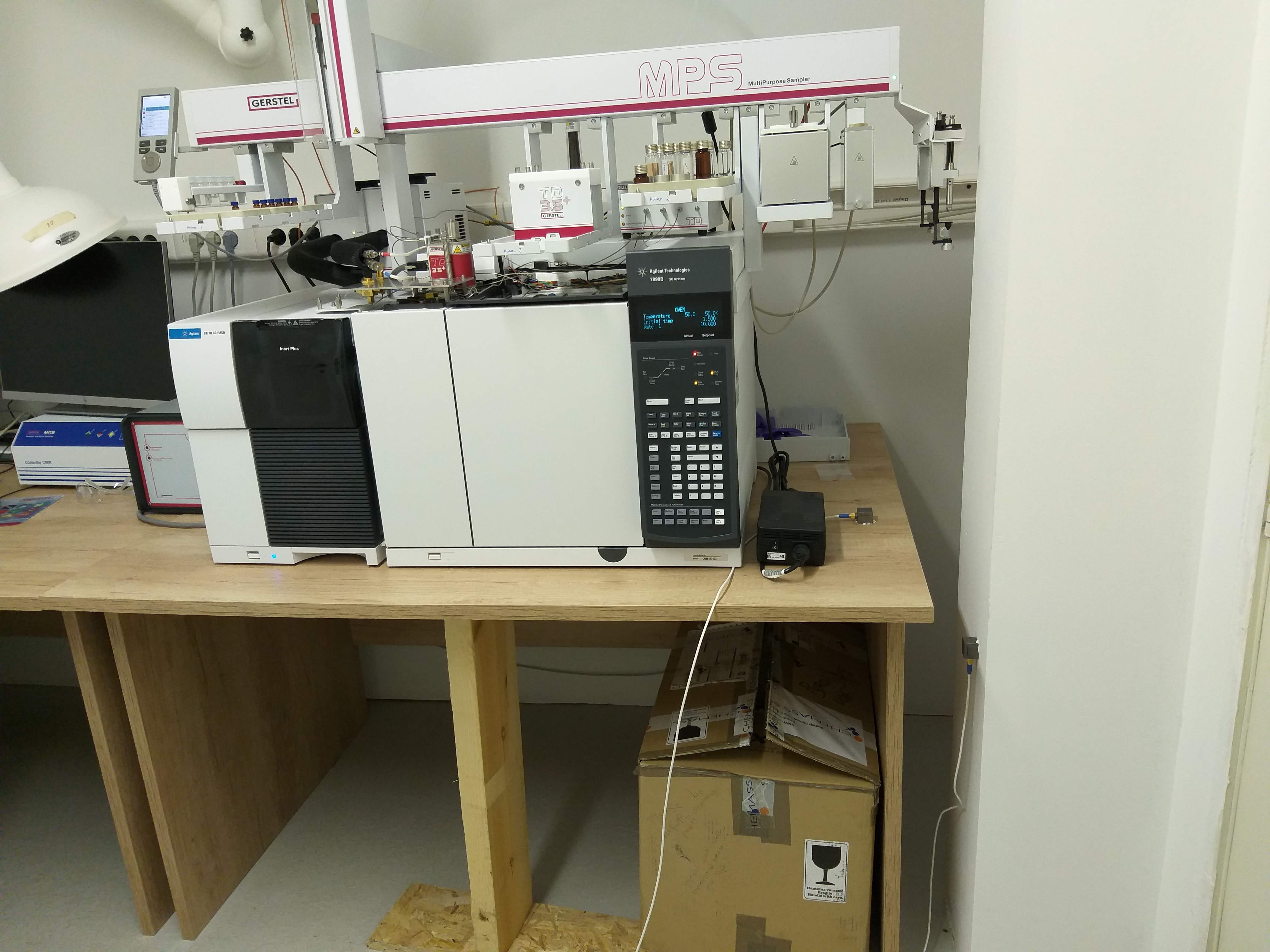
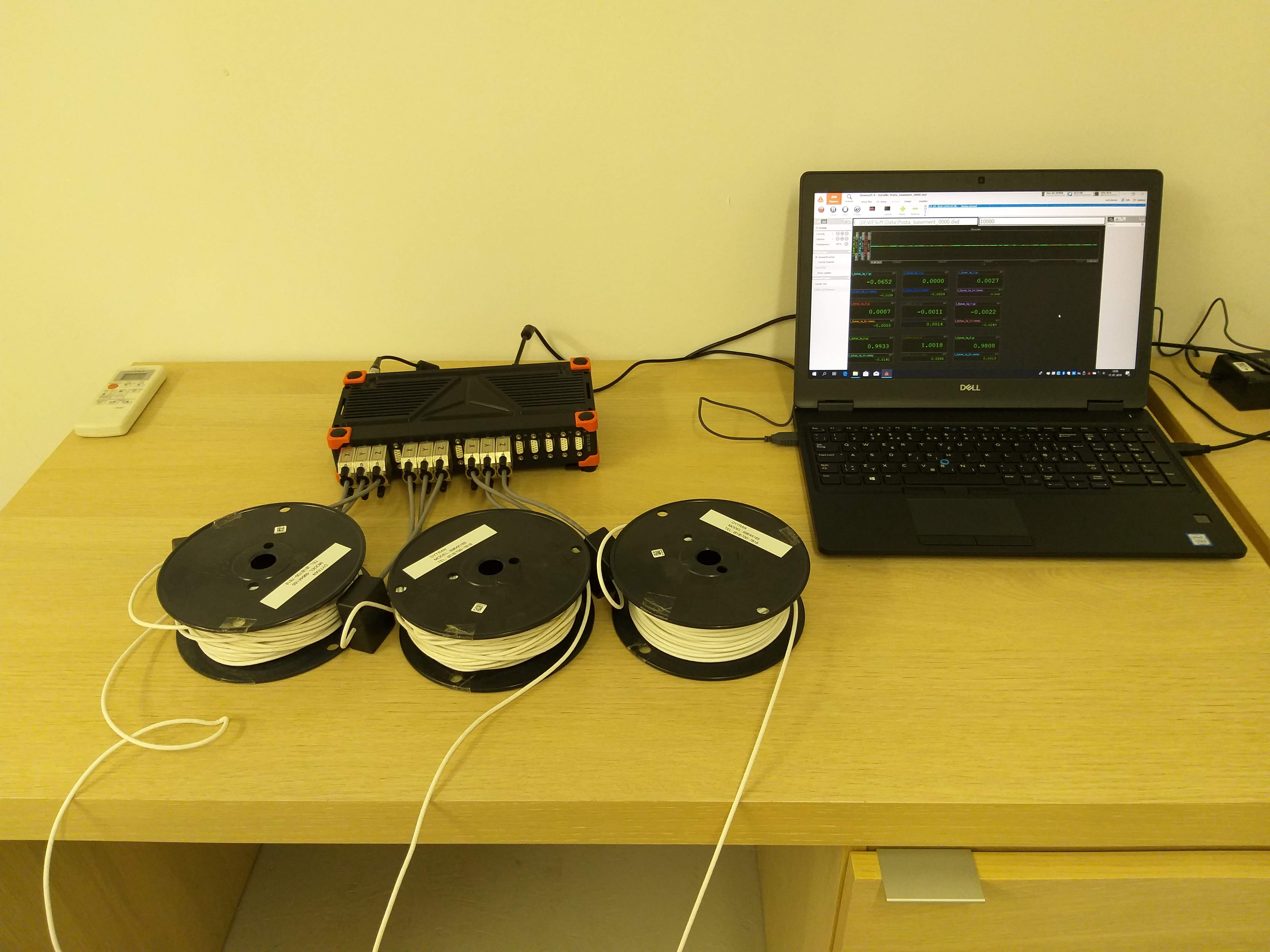

Figure 1 a-c. Measurements of vibration in the laboratory. Special training on software for measuring natural vibrations and vibrations caused by environment
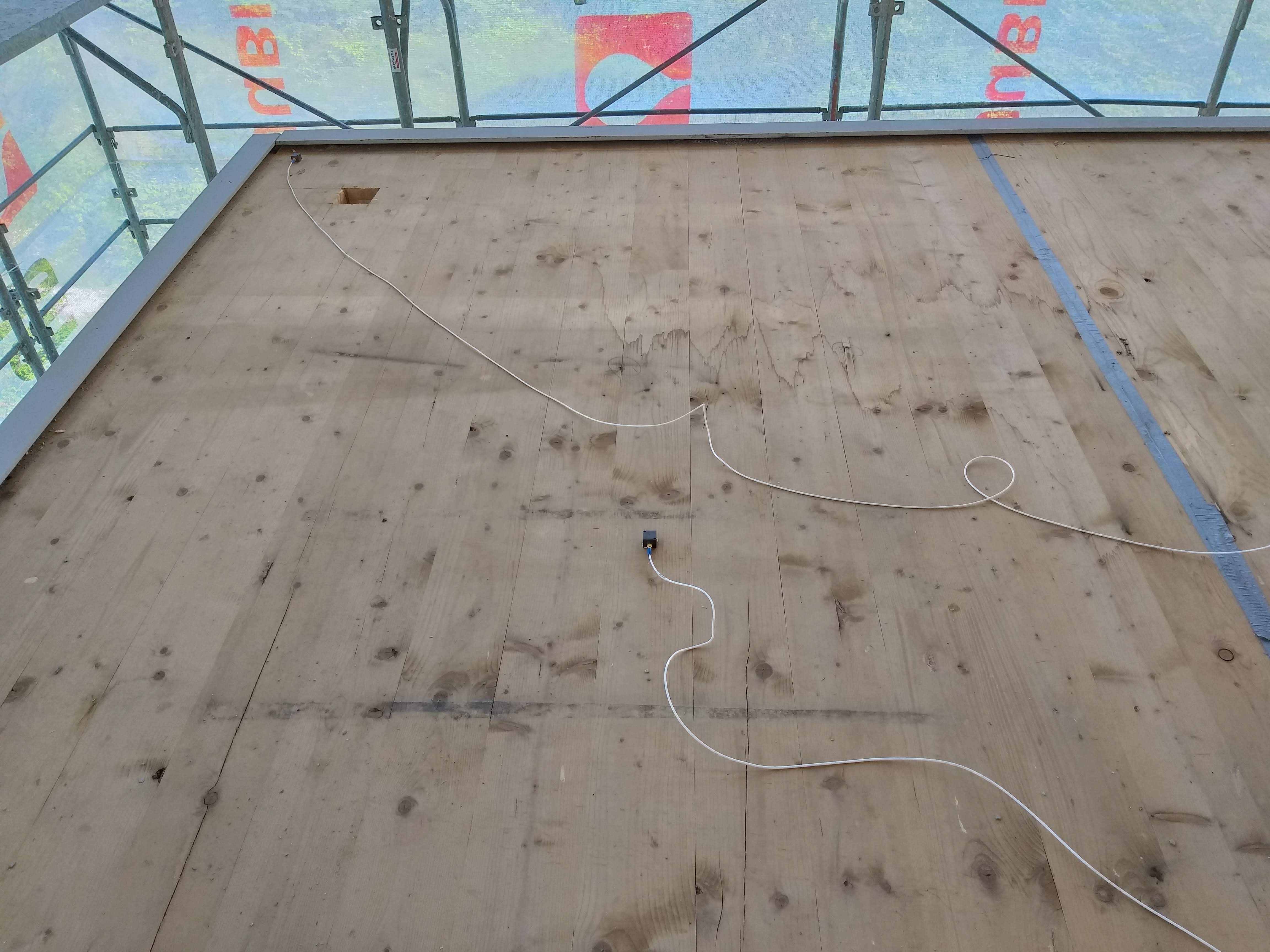
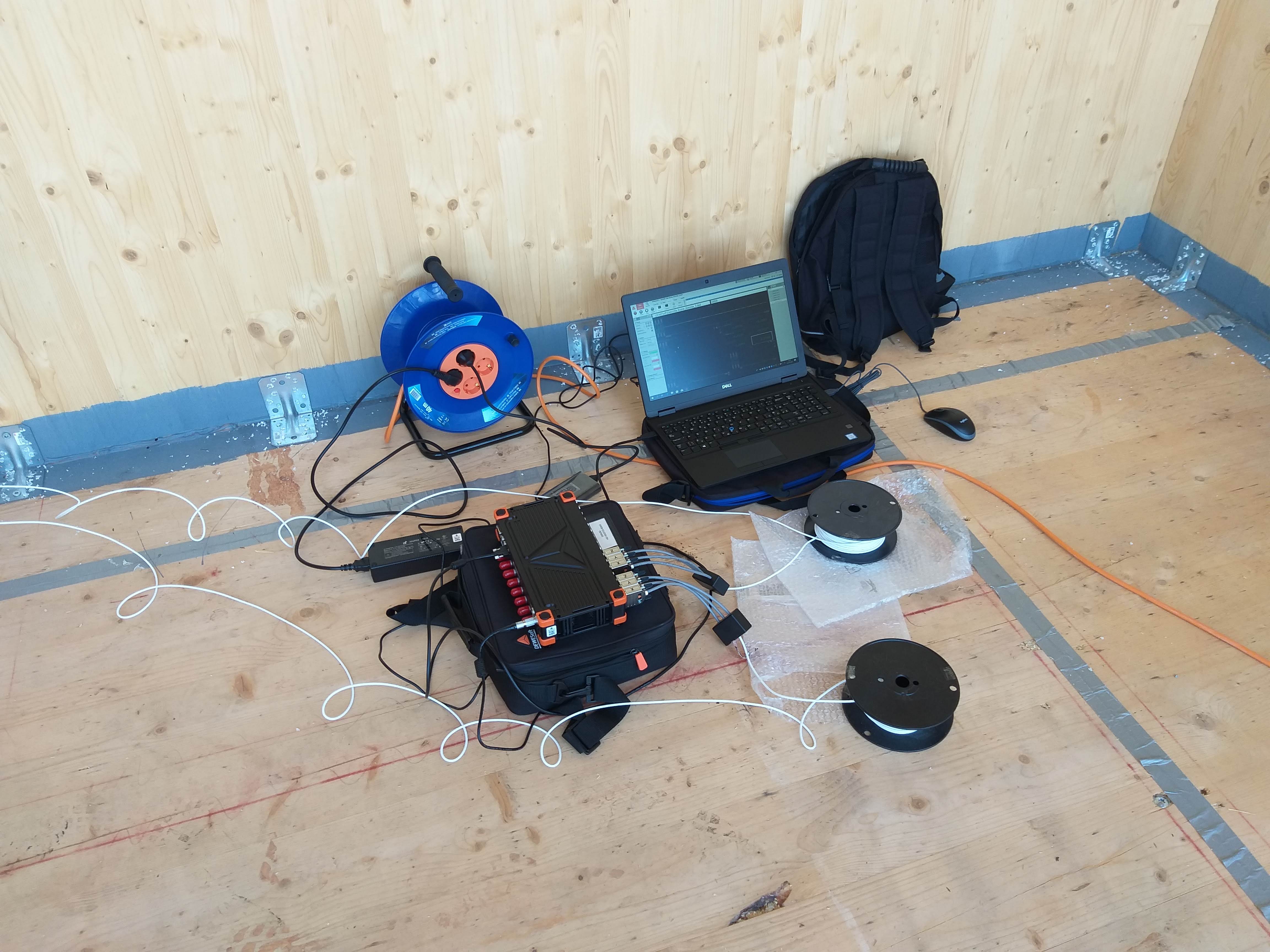
Figure 2. Measurements of vibration on-site (CLT building in Ljubljana)
3. Evaluation of the energy dissipation capacity of different kind of structures and connections
-
- Modelling of a structure and comparison of results of different techniques



- Modelling of a structure and comparison of results of different techniques
4. Seismic and risk assessment of existing structures
- Review of existing displacement and energy-based standards and guidelines: scientific paper submitted to the Polytechnic and Design Journal: SEISMIC DESIGN AND SEISMIC RISK - NEW TRENDS, authors: M. Stepinac, I. Šušteršič, I. Gavrić)
- Collecting the documentation on European buildings and development of numerical models
- Analysis of the existing experimental, numerical and computational models - special focus was on a new structures erected in CLT and masonry.
- Elaboration of structural design models typical for European multi-storey timber and masonry buildings.
- Very complex numerical models in structural software developed. Different design approaches (equivalent force analyses, modal analyses, pushover test and time-history analyses) were tested. FEM model prepared for a discussion in CEN meeting in Roma


Figure 4. 3D model for implementation in dynamic analyses
- Definition of assessment procedure for existing structures – case study
- Testing of old timber specimens

- Obtaining the new data from experimental work
- Evaluation of the energy dissipation capacity of different kind of structures and connections obtained
- Review of existing experimental data on energy absorption capacity of structures. Influence of modern connections on seismic performance and energy dissipation of a global behaviour.


5. Dissemination
- Presentation of the project at the Innorenew CoE Institute (22.8.2019)
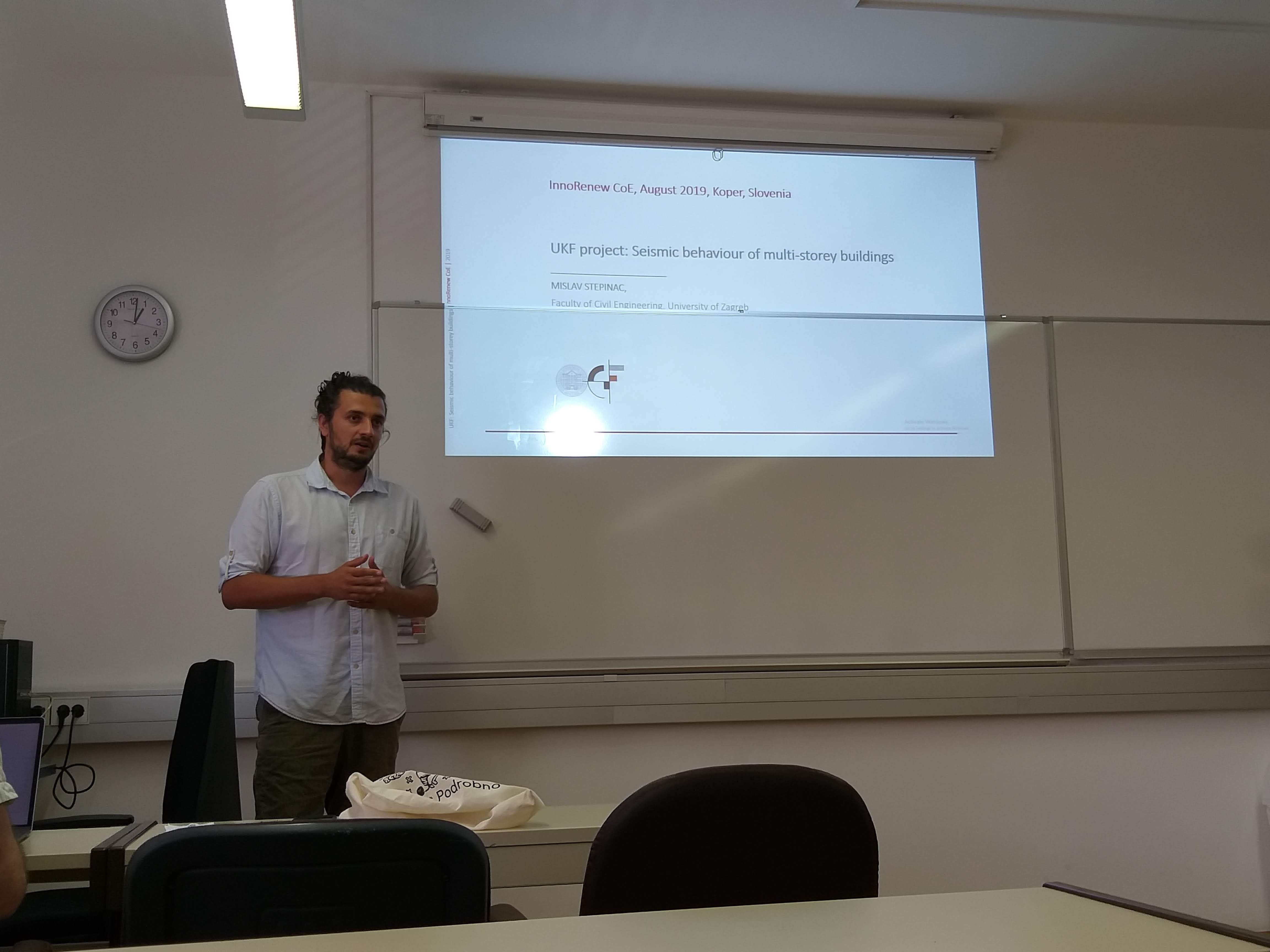
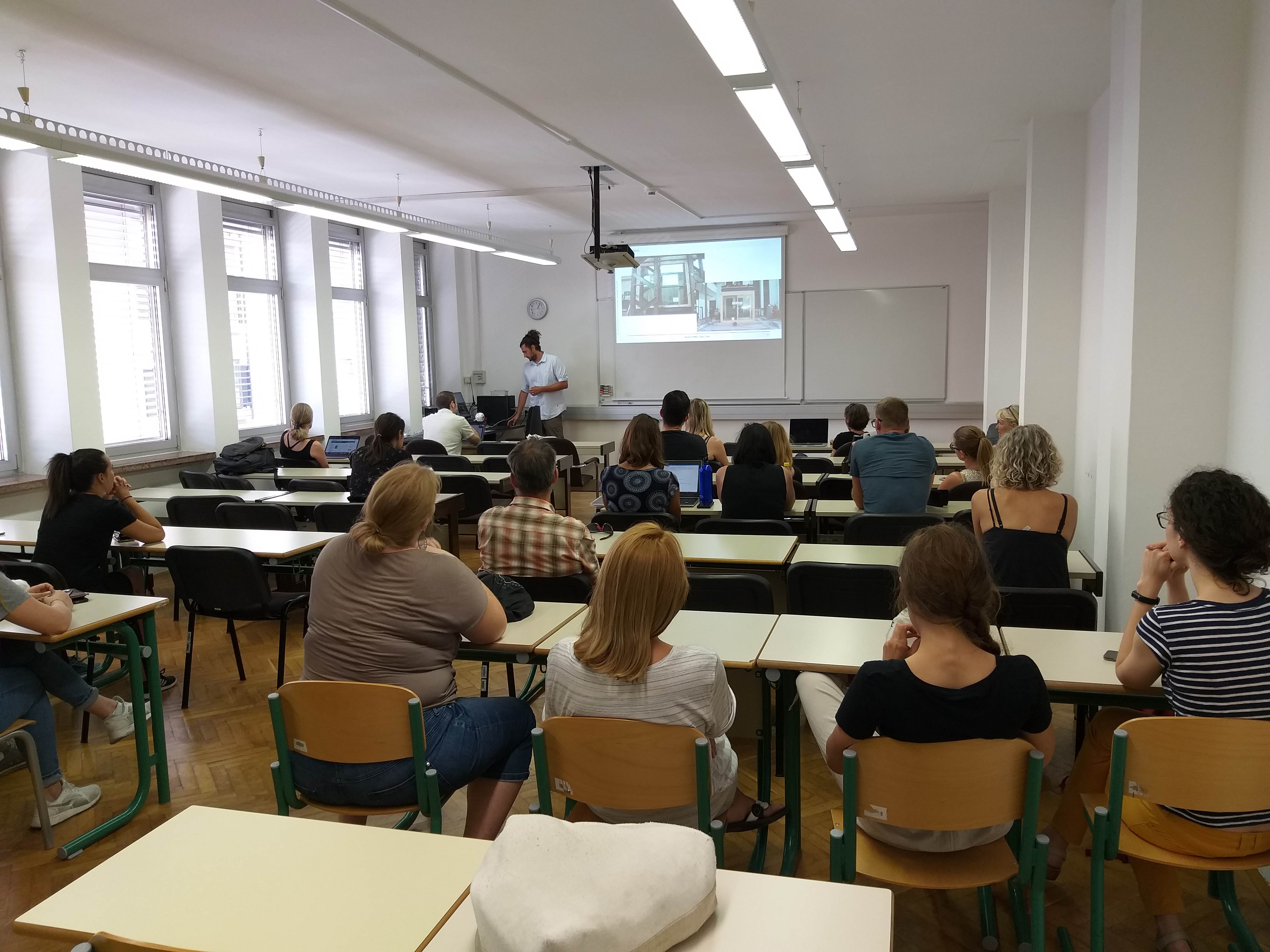
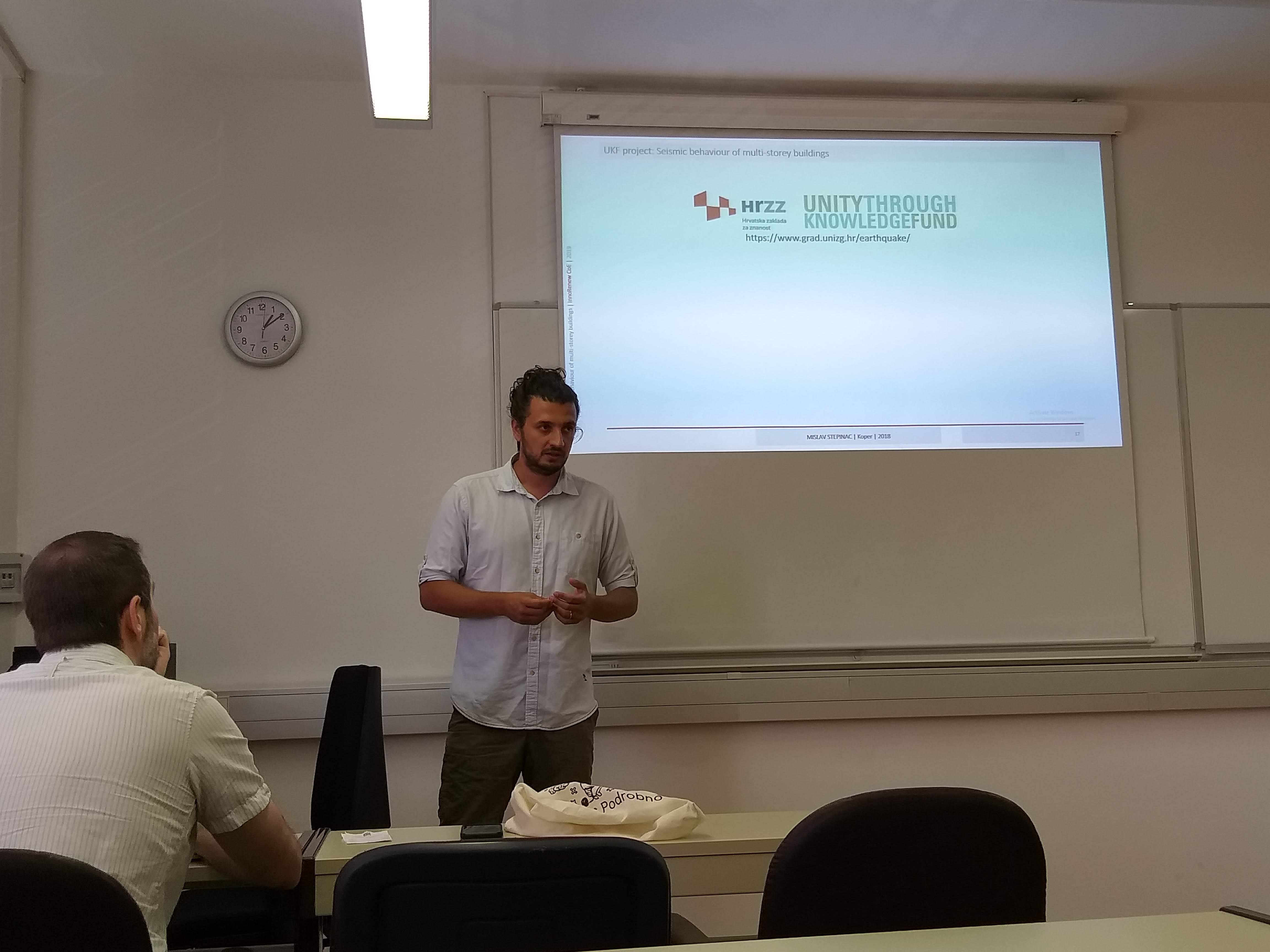
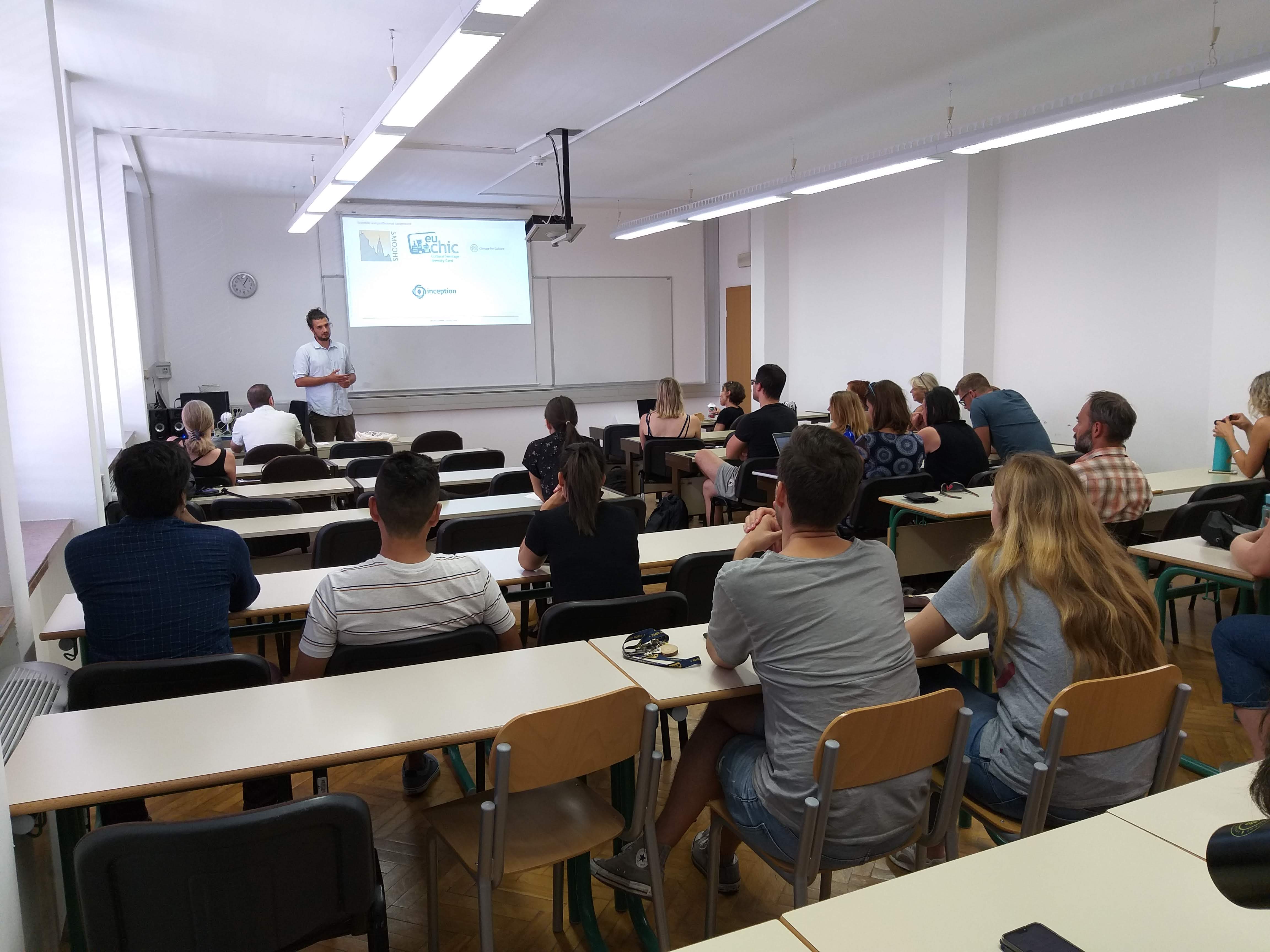
- Presentation of the project and project results on a Doctoral Symposium for Civil Engineers at the Faculty of Civil Engineering in Zagreb (September, 2019) - abstract submitted

- Dissemination of the results at CEN meeting in Roma, September, 2019 (Iztok Šušteršič)
- Abstract sent to a World Conference on Earthquake Engineering (WCEE): CONNECTION DUCTILITY DEMAND FOR DIFFERENT DUCTILITY LEVELS IN CAPACITY DESIGN OF MULTI-STOREY CLT BUILDINGS - The paper investigates the ductility demand for CLT connections in capacity design of multi-storey CLT buildings for different ductility levels. To make the capacity design fully applicable for a new structural system, information and understanding of ductile failure mechanisms of this system is necessary along with the values of overstrength factors and a suitable calculation procedure which considers the capacity design principles. To ensure sufficient deformation capacity of ductile components, variables that influence CLT walls stiffness, strength and ductility are considered in parametric analyses: geometry (aspect ratio) of CLT wall elements, monolithic walls vs. segmented (coupled) walls, position of connections, type and number of connections, vertical load on CLT wall panels. Plastic failure mechanisms are studied together with global ductility levels based on different local ductility levels of dissipative connections. Based on the outcomes, minimum required ductility values of dissipative zones in CLT buildings are proposed for the potential future implementation in the next generation of Eurocode 8 – timber part.
- Working on a paper of seismic behaviour and problems in modelling of timber structures – paper sent after the return to Zagreb (SEISMIC DESIGN OF TIMBER BUILDINGS: CHALLENGES AND FUTURE TRENDS) – overview of seismic design norms, standards and guidelines, seismic provisions for tall timber buildings, composites with timber, seismic retrofitting with timber)
- Idea for European Council Grant project proposal: proposal written after the visit and submitted on 15.10.2019. Name of the proposal: Safety and seismic vulnerability assessment: Fostering the use of new technologies

 Pristupačnost
Pristupačnost